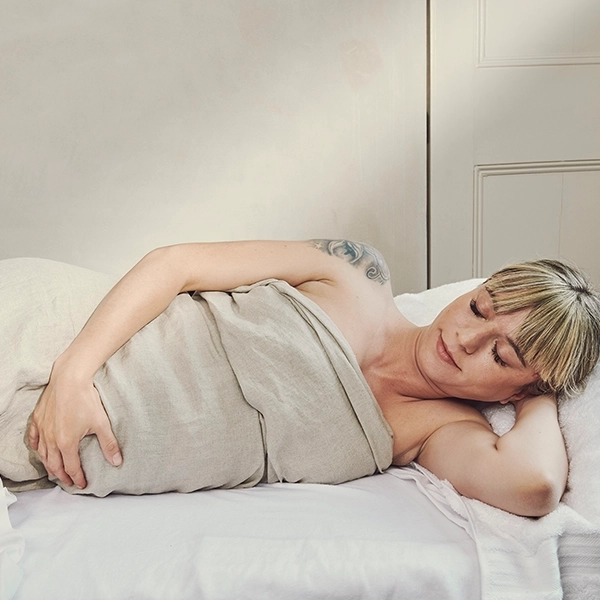Imagine the bliss of soothing strokes on the body as one navigates through the incredible journey of pregnancy. That’s where pregnancy massage comes into the picture, an elixir for expectant mothers facing discomfort, stress, and body aches which are often part and parcel of this transformative phase. I’m Paul, a professional massage therapist, and I dedicate a significant part of my practice to help mothers-to-be find relief and relaxation through pregnancy massage. Having witnessed firsthand the remarkable benefits, I felt compelled to share what every pregnant individual should know about this nurturing therapy.
Understanding Pregnancy Massage
Pregnancy massage, often cited as prenatal massage, is tailored specifically to the needs of pregnant women. The human touch can be comforting during this time, and massage therapy has been shown to reduce anxiety, decrease symptoms of depression, and relieve muscle aches and joint pains.
The Benefits Go Beyond Relaxation
The advantages of pregnancy massage are extensive. Alleviation of stress on weight-bearing joints, improved circulation, assistance in maintaining proper posture, and enhanced oxygen and nutrients for both mother and baby are just a few perks in a long list. It also contributes to better sleep, provides emotional support, and develops the sensory awareness crucial for labour and birthing.
Safe Stages for Pregnancy Massage
While it’s generally safe, the peculiarities of each trimester come into play when deciding the appropriate time for a pregnancy massage. Many therapists recommend avoiding massage during the first trimester due to the increased risk of miscarriage. However, from the second trimester onwards, when the risk declines, massage can be enjoyed with more confidence. The third trimester is completely unique, as mothers-to-be suffer from more pronounced strain and discomfort – a prime time for the benefits of pregnancy massage to be fully appreciated.
Modifications for Safety and Comfort
Adaptations to conventional massage are necessary to ensure the security and comfort of both mother and child. As a mobile massage therapist, I bring special equipment like pregnancy pillows that allow the expectant mother to lie on her side. This position avoids direct pressure on the abdomen and is safe for both mother and the baby. The techniques I use avoid deep pressure and instead focus on relieving tension from the mother’s body.
Contraindications and Cautions
Pregnancy massage is not for everyone. Those with certain health conditions, such as high-risk pregnancies, hypertension, severe swelling, or high blood pressure, should avoid it or consult their healthcare provider. It’s paramount for me to be informed of any existing conditions or concerns before proceeding with a massage session.
Choosing the Right Therapist
When searching for a pregnancy massage therapist, it’s crucial to find someone with substantial training and a strong understanding of the complexities of pregnancy. Personally, I am well-versed in the physiological changes that occur during pregnancy and how to accommodate them to provide not only a soothing experience but a secure one.
Frequency of Pregnancy Massages
The frequency will depend on individual preferences, needs, and budget. Some might benefit from weekly sessions to manage chronic discomfort, while others find that a bi-weekly or monthly session suffices. Listening to the body is key, and that’s a principle I emphasise to all my clients at “Paul Massage”.
Combining Techniques
Pregnancy massage doesn’t exist in isolation. To maximise its benefits, I often recommend integrating techniques like stretching and breathing exercises. Such practices promote mindfulness and relaxation, thereby enhancing the therapeutic effects of the massage itself.
Home Environment and Pregnancy Massage
As a mobile therapist, I create a serene and secure environment right in the client’s home. This convenience allows the expectant mother to remain comfortable and relaxed without the need to travel. I ensure the ambience is calming, with gentle music, soft lighting, and optimum temperature, turning an ordinary space into a sanctuary for pregnancy massage.

Post-Massage Care
After a pregnancy massage, it’s essential to hydrate, rest, and listen to the body’s responses. While it’s normal to feel a sense of relaxation and peace, I encourage clients to contact me if they experience any discomfort or unusual symptoms post-massage. The open line of communication allows for adjustments in future sessions for a continuously positive experience.
The Versatility of Pregnancy Massage
It’s interesting to note that massage can be beneficial not just during pregnancy but also post-delivery. Postnatal massage can aid in realigning the body, promote faster healing, and provide a much-needed respite as the new mother adjusts to her routine with the baby.
Engaging Your Partner in the Process
I advise expectant couples on simple massage techniques that partners can perform at home. It not only fosters connection and support but also instills a sense of participation in the pregnancy journey.
Final Thoughts
In conclusion, pregnancy is an extraordinary period and having the support of a therapeutic practice like pregnancy massage can make a world of difference. For all you mothers-to-be, incorporating a touch of tranquility with regular massage can assist in creating a healthier, happier, and more comfortable gestation period. At “Paul Massage”, your well-being is my priority, and I am here to support you through every trimester with tailored massage treatments that cater to your unique journey towards motherhood.
Remember, always consult your midwife or GP before beginning any new therapeutic practice while expecting. If you’re looking to add pregnancy massage to your prenatal care regimen, feel free to reach out. Let’s work together to make your pregnancy as comfortable and joyful as possible.

0 comments